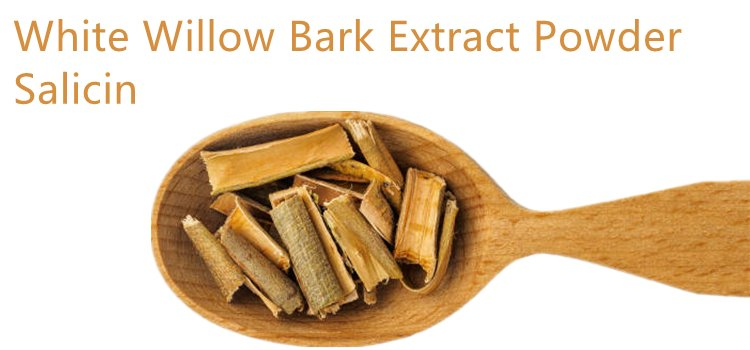White Willow Bark Extract is a natural ingredient that has gained popularity in the skincare industry. Derived from the bark of the white willow tree (Salix alba), this extract has been used for centuries due to its potential therapeutic properties. In recent years, it has emerged as a popular ingredient in skincare products. This article aims to explore the potential benefits and uses of it for skin health.
1. Anti-inflammatory Properties
One of the key benefits of it is its anti-inflammatory properties. It contains a compound called salicin, which is converted to salicylic acid in the body. Salicylic acid is a well-known anti-inflammatory agent that helps soothe and calm irritated skin. By reducing inflammation, it may help alleviate various skin conditions, including acne, eczema, and rosacea.
2. Exfoliation and Skin Renewal
it also possesses natural exfoliating properties. It contains beta-hydroxy acids (BHAs), such as salicylic acid, which can help unclog pores and remove dead skin cells. By gently exfoliating the skin, this extract promotes cell turnover, leading to a smoother, brighter complexion. Regular use of products containing it can help improve the texture of the skin and reduce the appearance of fine lines and wrinkles.
3. Antioxidant Activity
Antioxidants play a crucial role in protecting the skin against damage caused by free radicals. it contains various antioxidants, such as flavonoids and phenolic compounds, which help neutralize free radicals and prevent oxidative stress. By combating oxidative damage, this extract may contribute to the overall health and youthful appearance of the skin.
4. Oil Control and Acne Treatment
it is known for its astringent properties, which can help control excess oil production. By regulating sebum production, it can assist in preventing clogged pores and reducing the occurrence of acne breakouts. Additionally, its antimicrobial properties may help combat the bacteria that contribute to acne formation, making it an effective ingredient for acne-prone skin.
5. Soothing and Calming Effect
In addition to its anti-inflammatory properties, it has a soothing and calming effect on the skin. It can help relieve skin irritations, redness, and itchiness, making it suitable for sensitive or easily irritated skin types. Incorporating skincare products containing this extract may help alleviate discomfort and promote overall skin comfort.
Conclusion
it offers a range of potential benefits for skin health. Its anti-inflammatory, exfoliating, antioxidant, oil-controlling, and soothing properties make it a valuable ingredient in skincare formulations. However, as with any skincare ingredient, individual experiences may vary, and it is advisable to conduct a patch test and consult with a dermatologist before incorporating new products into your skincare routine.
It's important to note that while it shows promise in promoting skin health, it is not a substitute for professional medical advice or treatment. If you have specific skin concerns or conditions, it is best to seek guidance from a qualified skincare professional or dermatologist.
Overall, when used appropriately and in combination with a well-rounded skincare routine, it can be a beneficial ingredient for improving the overall health and appearance of the skin.

Is Willow Bark as Effective as Salicylic Acid?
Introduction
The quest for natural remedies has gained significant momentum in recent years, with people seeking alternatives to synthetic drugs. Willow bark, derived from the bark of several willow tree species, has been revered for its medicinal properties since ancient times. One of its key components, salicin, has been found to exhibit similar effects as salicylic acid, a commonly used compound in the pharmaceutical and skincare industries. This article explores the effectiveness of it compared to salicylic acid, shedding light on its potential applications and limitations.
Background
Salicylic acid, a beta-hydroxy acid, is widely recognized for its anti-inflammatory, analgesic, and antiplatelet properties. It is commonly used to alleviate pain, reduce fever, and treat various skin conditions, including acne, psoriasis, and warts. Salicylic acid works by inhibiting the production of prostaglandins, which play a role in inflammation and pain. However, its synthetic nature and potential side effects have prompted researchers and consumers alike to explore natural alternatives.
Willow Bark
Willow bark contains salicin, a glucoside that is metabolized in the body to produce salicylic acid. This natural conversion makes willow bark an appealing substitute for salicylic acid. Studies have shown that it exhibits similar anti-inflammatory and pain-relieving properties to salicylic acid. It has also demonstrated efficacy in reducing fever and treating various dermatological conditions.
Efficacy in Skincare
Salicylic acid is widely used in skincare products due to its ability to exfoliate the skin, unclog pores, and combat acne. Willow bark extract, with its salicin content, has shown promise as a natural alternative for achieving similar effects. Research suggests that willow bark extract can reduce sebum production, inhibit the growth of acne-causing bacteria, and prevent the formation of comedones. It is believed to possess keratolytic properties, aiding in the removal of dead skin cells and promoting a clearer complexion.
Anti-inflammatory and Analgesic Properties
Both salicylic acid and it have demonstrated anti-inflammatory and analgesic properties. They can help alleviate pain, reduce swelling, and mitigate inflammation associated with conditions such as osteoarthritis, rheumatoid arthritis, and lower back pain. While salicylic acid is commonly used in pharmaceutical preparations, willow bark extract is often utilized in traditional medicine and herbal remedies for these purposes.
Considerations and Limitations
Although willow bark shows promise as an alternative to salicylic acid, there are some considerations to keep in mind. The concentration of salicin in willow bark can vary, impacting its effectiveness. Additionally, the conversion of salicin to salicylic acid in the body may not be as rapid or efficient as using salicylic acid directly. Therefore, the dosage and formulation of willow bark products are crucial factors to consider to ensure optimal results.
Furthermore, it is important to note that individuals with salicylate sensitivity or allergies may experience adverse reactions when using products containing salicylic acid or willow bark extract. Patch tests and consultation with healthcare professionals are advisable before incorporating these substances into skincare or medicinal routines.
Conclusion
Willow bark, with its salicin content, offers potential as a natural alternative to salicylic acid. It exhibits comparable anti-inflammatory, analgesic, and skincare benefits. While further research is needed to fully understand its mechanisms of action and determine optimal dosages, willow bark holds promise as a botanical alternative for those seeking natural remedies. As with any therapeutic substance, individual considerations and professional guidance should be taken into account to ensure safe and effective use.
Does Willow Bark Extract Help with Acne Scars?
Introduction
Acne is a common skin condition that affects millions of people worldwide. While acne itself can be distressing, the scars left behind can further impact a person's self-esteem and confidence. In the search for effective remedies, natural ingredients like willow bark extract have gained attention for their potential benefits in reducing acne scars. In this article, we will explore the properties of willow bark extract and its potential effectiveness in treating acne scars.
1. Understanding Willow Bark Extract
Willow bark extract is derived from the bark of several species of willow trees, such as white willow (Salix alba). It has a long history of medicinal use, dating back to ancient civilizations such as the Egyptians and Greeks. The extract contains a compound called salicin, which is a natural source of salicylic acid.
2. Exfoliation and Skin Renewal
Salicylic acid, found in willow bark extract, is a well-known ingredient in many skincare products. It exhibits exfoliating properties by gently removing dead skin cells, unclogging pores, and promoting skin renewal. This exfoliation process may help fade acne scars over time by encouraging the growth of new skin cells.
3. Anti-inflammatory Effects
Acne scars often result from the inflammation caused by acne breakouts. it possesses anti-inflammatory properties that can help reduce redness and swelling associated with acne scars. By calming the skin, it may contribute to the overall improvement of scar appearance.
4. Antioxidant Benefits
Another notable characteristic of it is its antioxidant activity. Antioxidants protect the skin from damage caused by free radicals, which can contribute to premature aging and hinder the healing process of scars. By neutralizing free radicals, it may support the skin's natural healing mechanisms and aid in scar reduction.
5. Collaborative Benefits with Other Ingredients
it is often combined with other skincare ingredients, such as alpha-hydroxy acids (AHAs) and niacinamide, to enhance its effects. AHAs, like glycolic acid, can further promote exfoliation and improve skin texture, while niacinamide has been shown to enhance skin barrier function and reduce hyperpigmentation. Combining these ingredients with it may create a synergistic effect in treating acne scars.
6. Factors to Consider
While it shows promise in addressing acne scars, it is important to consider individual factors. The severity of the scars, skin type, and other underlying skin conditions can influence the effectiveness of any treatment. It is advisable to consult a dermatologist or skincare professional for personalized recommendations and guidance.
Conclusion
Willow bark extract, with its salicylic acid content, exfoliating properties, anti-inflammatory effects, and antioxidant benefits, holds potential in reducing the appearance of acne scars. However, further research and clinical studies are necessary to establish its efficacy and optimal usage. When incorporated into a comprehensive skincare routine and used in conjunction with professional advice, it may contribute to the journey of achieving smoother, healthier-looking skin.
Contact us selina@ciybio.com.cn



